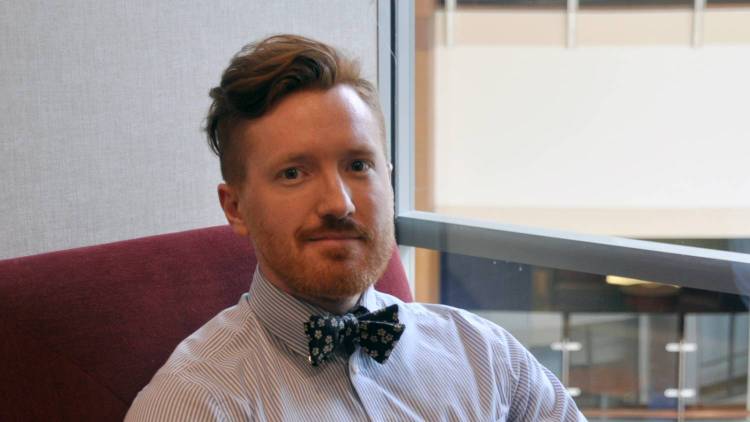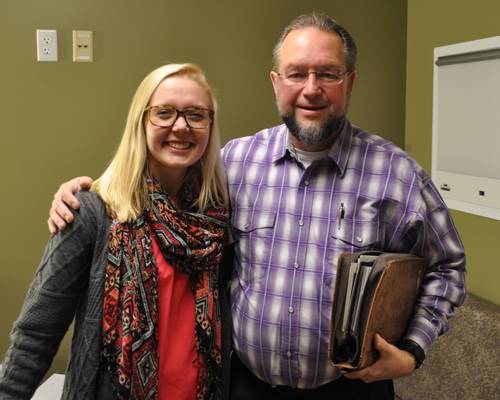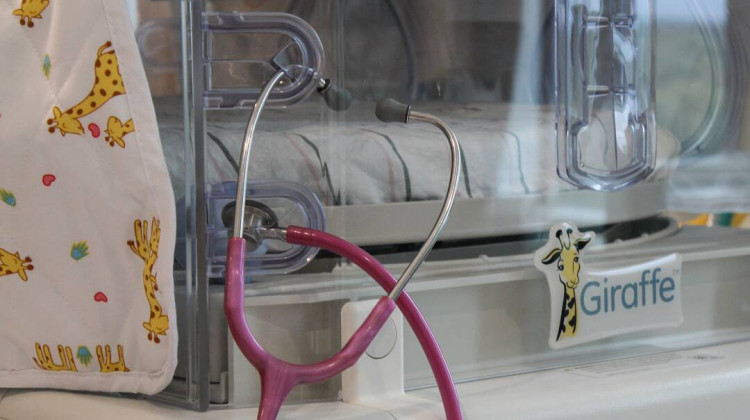Art therapy is a growing trend. A year and a half ago, a program was started with patients at the Indiana University Neuroscience Center. It’s now also used as a tool for some of the center’s healthcare workers to decrease stress and avoid burnout.
Dr. Bob Pascuzzi chairs Neurology at the IU School of Medicine. On a daily basis, he sees serious neurology cases – people with ALS, Parkinson’s and other brain disorders. He says many of them have had unmet needs.
“There’s this large group of patients who have a significant component of stress, depression, anxiety, mood, fear – existential challenges and questions that our conventional medication and conventional management does not address,” says Pascuzzi.
To address these challenges, Pascuzzi worked with Herron School of Art and Design art therapy professor Juliet King to create an art therapy program.
King says art therapy is more than just making art. A trained psychotherapist combines the use of art mediums - like clay, pencils or even finger paints - with therapy. It focuses on emotions, the unconscious, and thoughts that are difficult to verbalize.
“We understand that different materials and methods evoke a different cognitive and emotional response," King says. "So we look at the kind of materials that we’re using, the type of issues that the person’s dealing with, so that we can help a person express themselves,” she says.
Roger Jenkins is a patient in the program. He has Parkinson’s disease.
“My current therapist knows more about me than anybody else on the face of the earth and that is true. And she didn’t have to twist my arm either," Jenkins says with a smile. "I felt safe, secure – it’s like a magnet – she pulled it out and she didn’t even have to try.”
Patients are not the only people who may benefit from art therapy. Those on the other end of the stethoscope may too. A Mayo Clinic study shows over 50 percent of physicians struggle with excessive workloads, burdensome electronic record keeping, and problems with work/life integration. Pascuzzi says it’s a persistent issue.
“You’ll hear a lot about professionals in healthcare and their problems with burnout," Pascuzzi says. "People talk about that because it’s a big, huge problem. In many places it’s a high priority in healthcare to keep professionals afloat,” he says.
Pascuzzi and King created therapeutic art sessions for people working in IU Health’s Neurology program.
Participant, Dr. James Grogan, in rotation at IU North hospital, says the art therapy session removed the hierarchy - doctors, students and staff members were equal participants.
“People were totally engrossed in this exercise. And I think that’s what caught me off guard the most – focusing on cutting pieces of paper and analyzing our art,” Grogan says.
He says the experience was beneficial.
“I feel like, after that session, I try to look inwardly more and be more analytical and critical of my current state of being. Cause I think we’re all prone to burnout," Grogan says. "Residency, in particular, can be very demoralizing – you know - working up to 30 hours straight.”
IU Neuroscience Center art therapy funding has been renewed and Pascuzzi and King continue to develop clinical care and research. King co-authored a recent study with IUPUI professors and art therapy graduate students showing cortical brain activity changes after artmaking. Analysis of additional research is expected later this year.
 DONATE
DONATE











 Support WFYI. We can't do it without you.
Support WFYI. We can't do it without you.